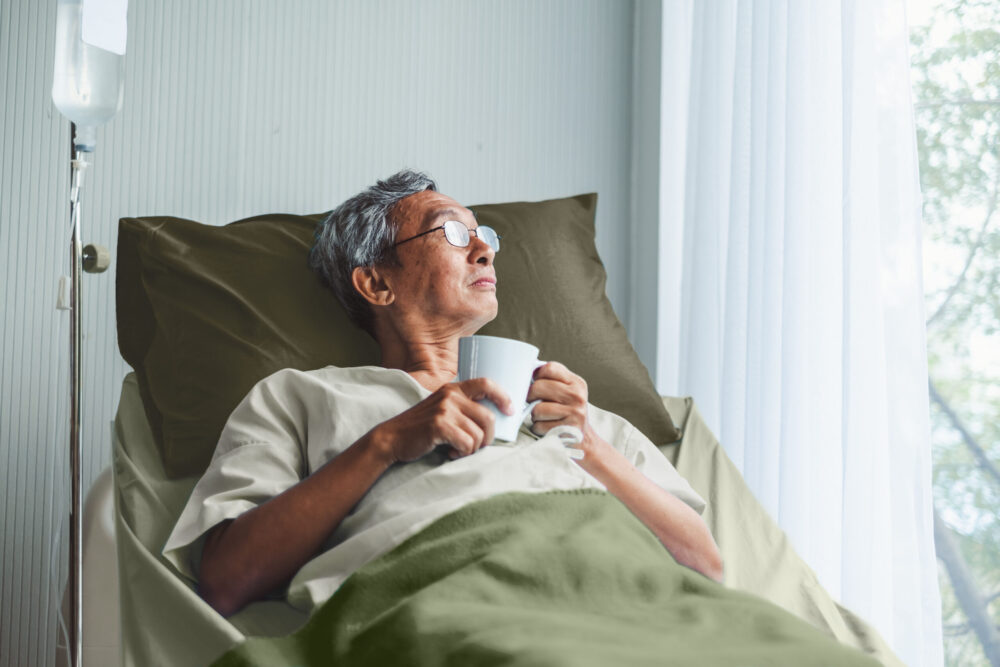
Hospice for Cancer
Published
July 19, 2023Cancer is a group of diseases characterized by the uncontrolled growth and spread of abnormal cells in the body. It can occur in any part of the body and can lead to serious health problems if left untreated. Cancer can be caused by various factors such as genetic mutations, environmental factors and lifestyle choices. The treatment options for cancer may include surgery, chemotherapy, radiation therapy, targeted therapy and immunotherapy. Early detection and prevention measures, such as regular screenings and adopting a healthy lifestyle, can significantly improve the chances of successfully treating cancer. Despite the progress made in cancer research, it remains one of the leading causes of death worldwide and a leading diagnosis for admission into hospice care.
Patients may reach a point where treatment is no longer effective if the cancer has progressed to an advanced stage, or if the cancer has become resistant to treatment. At this point, the focus of care shifts from curative treatment to palliative care, which is aimed at managing symptoms, controlling pain, and improving quality of life. Hospice care is often recommended for patients in the advanced stages of cancer who have a life expectancy of six months or less, and who choose to forgo further curative treatment. Hospice care can provide comfort and support to patients and their families during the end-of-life stage while shifting focus from curative to quality of life.
When is Hospice Called for Cancer Patients?
The signs and symptoms of advanced-stage cancer can vary depending on the type and location of the cancer, as well as the individual’s overall health. However, some common signs and symptoms that may indicate when hospice care is appropriate include:
- Significant pain that cannot be controlled with medication
- Difficulty swallowing or severe nausea and vomiting
- Significant weight loss and/or loss of appetite
- Increased confusion, weakness and fatigue
- Chemotherapy and radiation side effects
If an individual is experiencing one or more of these symptoms, it may be appropriate to consider hospice care as an option for end-of-life care. Hospice care can provide support and comfort to both the patient and their family, helping to manage symptoms and improve quality of life in the final stages of the disease.
How Hospice Can Help Patients with Cancer
Education
The care team educates patients and families about the disease process, what to expect, how to manage symptoms and reduce anxiety and uncertainty.
Proactive Symptom Management
Proactive symptom management and timely interventions can reduce unnecessary hospitalizations.
Emotional Support
Hospice care supports both patients and families, helping them cope with the challenges and emotions associated with a terminal diagnosis.
Personal Care
Hospice aides can assist with daily activities like bathing, dressing and mobility, to manage personal hygiene and support with dignity.
How Hospice Care Can Help a Cancer Patient’s Family
- Provides education and tools for families, loved ones and caregivers:
Hospice care providers can help families better understand the end-of-life process and provide them with the tools and resources they need to care for their loved one. This can include information about managing pain and other symptoms, providing emotional support, and understanding the changes that occur as the patient approaches the end of their life. By providing education and tools, hospice care can help families feel more prepared and confident in their ability to care for their loved one.
- Respite for families and caregivers:
Hospice care providers can offer respite care, giving family caregivers a much-needed break from the demands of caring for a loved one with cancer. This can help prevent burnout and ensure that family caregivers are better able to provide quality care to their loved one. Respite care can also give family caregivers time to take care of their own physical, emotional, and spiritual needs.
- Emotional and spiritual support:
Hospice care providers can offer emotional and spiritual support to patients and their families, helping them cope with the emotional stress of caring for a loved one with cancer. Hospice care providers are trained to be sensitive to the needs of patients and their families and can provide emotional support and companionship. This can be especially important for families who may be feeling overwhelmed or isolated.
Hospice care providers can offer bereavement services to help families cope with the loss of their loved one. This can include counseling, support groups, and other resources to help families navigate the grieving process. By providing bereavement services, hospice care can help families find comfort and support during this difficult time.
Frequently Asked Questions
How long do cancer patients live on hospice?
The length of time that cancer patients live on hospice can vary widely depending on a number of factors, including the stage and type of cancer, the patient’s overall health and the effectiveness of treatment. In general, hospice care is recommended for patients with a life expectancy of six months or less, as determined by their healthcare provider.
Can cancer patients continue to receive treatment while in hospice care?
Yes, cancer patients can continue to receive treatment while in hospice care if the treatment is aimed at providing comfort and managing symptoms rather than curing the disease. However, aggressive curative treatments, such as chemotherapy or radiation therapy, are generally not provided in hospice care.
Can hospice care for cancer patients be provided at home?
Yes, hospice care for cancer patients can be provided at home. In fact, providing hospice care in the patient’s home is one of the core principles of hospice care. Hospice care providers work closely with patients and their families to develop a plan of care that is tailored to the patient’s needs and preferences and that allows the patient to be comfortable wherever they call home.
In-home hospice care for cancer patients may include medical and nursing care, as well as emotional, spiritual, and practical support. The hospice care team may visit the patient’s home regularly to provide care, monitor symptoms, and adjust treatment as needed. They may also provide equipment and supplies, such as hospital beds, oxygen tanks, and medications, to help manage the patient’s symptoms and improve their comfort.
How is pain managed in hospice care for cancer patients?
Hospice care providers carefully monitor patients’ medication use to ensure that pain is effectively managed while minimizing side effects and risks.
In addition to medication, hospice care providers may also use non-pharmacological approaches to pain management, such as massage, music therapy and relaxation techniques. These approaches can be used alone or in combination with medications to help manage pain and improve patients’ overall quality of life.
Hospice care providers also work closely with patients and their families to identify and address any other factors that may be contributing to pain, such as anxiety or depression. By taking a holistic approach to pain management, hospice care providers can help patients achieve greater comfort and improve their overall well-being during the end-of-life journey.

